Influence Summary by Robert Cialdini discusses primary principles like scarcity, authority, reciprocation, liking, etc., that influence human beings.
Who Should Read Influence Summary, And Why?
[amazon box=”006124189X”]
I’d suggest this book to mainly two types of people:
- Salespersons
- Those who get easily manipulated by other people.
A salesperson uses every trick of the trade to make sure that he convinces the prospect to spend his money on what the salesperson is trying to sell.
On the other hand, if an ordinary person doesn’t know about these sales tricks, he may get easily tricked by someone who knows them.
You decide for yourself which one of the above two types you are.
Why Do People Want To Persuade In General?
Before I start the summary, I want to discuss why people want to persuade.
Knowing this might change how you look at this book.
There is no mystery to it.
People persuade other people for selfish reasons. (Exceptions exist)
And there may be a myriad of reasons like:
- For commercial purpose
- For personal benefit
- For a greater cause
- To avoid problems
- To create problems
Persuasion is like a sword. Either you use it to protect, or you use it to inflict damage.
It all depends on the user of the technique.
Influence Summary (PDF)
In this summary, I’ll share all the sales lessons I learned from Robert Cialdini’s book Influence.
So put your mobile on silent and get rid of any distractions.
Make sure you don’t miss any lessons. Why?
Because someone else might use it on you.
Just kidding. Don’t fear!
This summary will prepare you enough.
So without further ado, let’s dive in.
Learn The Science Of Persuasion
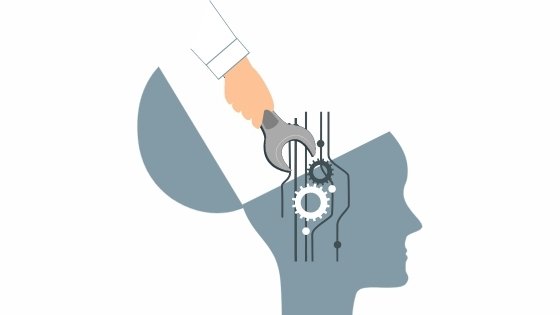
You saw it coming, didn’t you?
It’s the first lesson that you should take away from this book.
People have been buying and selling for centuries.
So if someone buys something, it means that someone has sold it.
Over time, people have developed various tricks and strategies to increase their sales and make more profits.
And it’s not always about more sales.
Persuasion, in general, is used to make people do something you want them to do.
Although persuasion sounds like a set of shady techniques, it isn’t really.
Persuasion is a science learned by doing experiments on human behavior.
This summary will teach you some basic persuasion strategies that are used all around the world by master salespersons.
The best part is:
Most of these techniques are evergreen.
This means that they have been influential in the past, are effective today, and probably will continue to be effective in the future.
Disclaimer:
There is no guarantee that the following tricks will work all the time. But they work in general.
Humans Love To Take Shortcuts

We love to take shortcuts.
Why?
The reason is darn simple:
Because we want to avoid mental labor.
Imagine if we had to worry about all the intricate details while doing anything. It’d overload us cognitively each time a task was executed.
That’s why our brains form patterns that execute a task when triggered.
The author says it’s similar to recorded tapes that play when the “Play” button is hit.
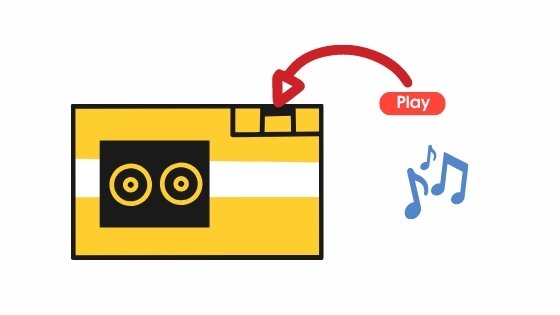
Question is:
What if someone else gets this “play” button?
If a salesperson gets where your “play” button is, he could easily manipulate you and make you buy his stuff.
For example, when people see a lot of options, they get confused and don’t take any action.
Knowing this, a retail store guy could arrange the items in such a way that you don’t get confused.
Another example:
We perceive inexpensive products as low-quality products.
So when you compare two products and want to have a quality product, you often choose the more expensive one.
All that behavior is wired into your brain like a pre-recorded tape.
Again, if you know your triggers, you can avoid such traps set by the salespeople.
On the flip side, if a salesperson knows how to play those tapes inside your mind, he could quickly sell you more stuff and make more money, even without you even realizing it.
That’s the beauty of persuasion.
So don’t always rely on shortcuts.
Such shortcuts may turn out to be expensive.
At first, it looks as if shortcuts might help you save time. But as you learned just now, how those shortcuts could be used to deceive you.
Try to be deliberate sometimes.
Focus on the intricate details, if possible.
You Can Convince People With A Reason

Generally speaking, people are hard to convince.
But when given a reason, they are more likely to get convinced.
For example, the author experimented and found that more people are persuaded when you use “Because” in your sentence.
This has a lot to do with humans’ ability to reason.
People don’t do anything unless they have a good enough reason to do it.
Remember? We love to take shortcuts and are often lazy-minded.
Now:
How can you apply this to 10x your revenue if you’re a salesman?
You need to give people a reason to buy your stuff. That’s it.
Even if you have something great, if people don’t feel that there is any reason to buy it, they won’t.
You can use simple sentences like:
“This XYZ product is a steal because it provides you <value>.”
See how that XYZ product sounds more reasonable now. And most people will buy it if they see it’s worth it. That’s how you give people a reason to purchase.
If you think about it, it’s all common sense.
But only a few people harness the power of reason.
If you’re an average person, don’t instantly believe in any reason.
Ask:
Is the reason strong enough, or the other person is just making it up for selfish reasons?
Say NO if you feel that the reason isn’t authentic.
The Power Of Reciprocation
The author says that humans love to return for favors.
“Give respect. Get respect.”
It’s one of the best examples of reciprocity.
Again, this behavior is stored like pre-recorded tape in our brains.
Going against this might make you feel like an evil person.
So if you do a favor for someone, he will be more likely to return it in the future.
Putting it another way:
There is a reason why you get FREE stuff.
Salespeople use this strategy often.
First, they give you something for free. Then when you feel the urge to return the favor, you end up buying from them.
Do good for someone, and you can expect the other person to do something good for you.
People have exploited reciprocity in the past and will continue to do so.
Beware, someone may use it on you too.
This doesn’t mean you have to get paranoid if someone shows you a positive gesture.
Just be aware of the power of reciprocity.
Always ask yourself:
“Why do I feel a sense of obligation to do a certain thing?”
You know? Nobody can save you from manipulation if you don’t even know that you are being manipulated.
Salespeople will use every ounce of their energy to make you buy from them.
They will get inside your mind and trick you.
But if you know the trick, you’ll be able to choose.
Let’s discuss another scheme or strategy used by marketers.
Read on!
The Most Used Weapon Of Marketers: Scarcity
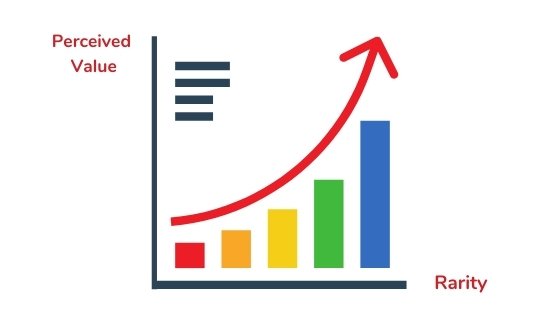
The idea is:
If something is rare, it looks more valuable.
Humans want to have or experience things that are rare and valuable.
Logically, rarity doesn’t guarantee any value.
But humans have evolved on the earth where resources are limited.
So psychologically, we associate rare stuff with valuable stuff.
Most marketers exploit this behavior.
That’s why special offers are often available for a limited time.
“Limited Time OFFER!”
These three words can instantly make something look as valuable and empty your bank balance.
We don’t want to miss anything valuable. We even pick out our wallets to get possession of a rare and valuable thing.
So if you are a seller or marketer, SCARCITY may help you get more sales and customers.
On the flip side, if you are an average person, you should not get fooled by such superficial scarcity.
Ask yourself:
Do I need to buy one? Is the hype real?
If there is a super rare mobile model available for a limited time, don’t just pick out your credit card as if you’ll miss something out.
Wait for a moment.
And think:
Do I already have one that fulfills my requirements?
Or the next time you see a catchy advertisement, ask yourself:
Is it trying to trigger my emotions on purpose?
Some items in this world are indeed rare and valuable.
But most of what you see in the advertisements is just created hype to get more sales.
Behind scarcity hides the fear of missing out (FOMO).
So keep a check on that too.
You won’t miss anything. Nothing is too rare when it comes to business.
You should make sure that if you need something or not.
Don’t buy out of scarcity and impulsiveness.
Think!
How Marketers Exploit Consistency
Consistency is a rewarding activity.
And most people associate consistency with success.
In short:
We love to be consistent.
But being consistent at wrong things is dangerous. Marketers or Salespeople know this. And they exploit this human behavior.
While making a transaction, a buyer might buy another upsell product.
This happens because once we buy something, we tend to stay consistent and buy the next one regardless of how expensive it is.
How a salesman uses this?
First, he offers you a cheap product.
And once you buy it, he offers you another similar or complementary product.
For example:
When you go to MacD, they recommend fries and cold drinks along with your main product.
They know that you are more likely to be consistent and buy from them again during that window.
And they are pretty successful at it.
Which proves that this technique works.
You know what’s more?
Most salespeople even suffer a loss due to their first cheap offer.
But they still go with it as their second offer breaks even the cost or generates profit.
It’s a risky move. But when the rewards are high, the risk is sometimes worth taking.
Now, what can you do as a customer?
I don’t mean that you shouldn’t go for the complimentary offer.
The point is:
Don’t just give in to your impulse.
Make a conscious decision.
Maybe you don’t need that extra cold drink.
Why waste your money?
You can use the money to buy something useful for you.
What Everybody Is Doing Looks Right…Even If It’s Wrong.
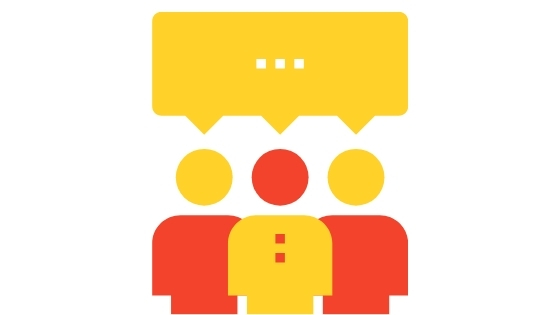
Well, the sub-head isn’t a lesson. It’s a fact.
Don’t take my word for it.
Just look around.
What do you do first when you are uncertain about something like your career?
If you are anything like most people, you look at what others are doing, right?
We are social animals.
And we avoid doing anything that’s not accepted by society.
Let me cut to the chase.
I’m talking about SOCIAL PROOF.
So if most people are doing something, it’s right. Right? Wrong.
This is a loophole in our thinking.
We tend to assume what the masses are doing is right.
But thinking that makes you vulnerable.
Salespeople brilliantly use social proof to influence you.
For example, they will show hundreds of people’s reviews to make you believe that what they’re selling is GREAT and is changing the lives of millions of other people.
And they usually succeed!
Because they’re using your psychology against you.
Keeping an eye on other people may come in handy.
But don’t blindly believe anything.
You may be helpless in some cases:
Like when you buy from online stores, you are helpless and rely on customer reviews.
The point is:
Have your own opinion. (And use common sense.)
You’d have seen that more crowd attracts more crowds. It all happens because of social proof.
The author also talks about The Bystander Effect in this book.
The researchers found that when you see people not taking any action during an emergency like a road accident, you tend to avoid any action.
This is yet another example of social proof.
Social proof is a powerful influencer.
Don’t give in to it.
You can use social proof to earn credibility and make more sales if you are a marketer.
(More customers attract even more customers.)
And if you are an average person, beware of it and protect your wallet.
The Contrast Principle
The idea is:
The order in which the events happen influences the next event and contrasts the result depending on the previous event.
Scratching your head, huh?
Allow me to explain.
I’ll borrow the author’s example here.
Let’s say you have three buckets with hot, cold, and regular water.
Suppose you put one hand in hot water and the other hand in cold water.
After 2 minutes, you put both hands in the normal water.
Guess what will happen?
Both of your hands will feel a different temperature even though the water has a normal temperature.
The colder hand will feel as if it has been put into hot water.
And the hotter hand will feel as if it has been put into cold water.
That’s the contrast principle for you.
The same phenomenon happens when you purchase something in a retail shop.
The order in which the products are presented affects your buying decision.
For instance, if an expensive product is offered first, the next less costly product looks even cheaper.
Salespeople sometimes deliberately show you an expensive product first and then a less expensive one.
Although it looks as if you are in charge of your decisions, you do exactly what the salespeople wanted all along.
It doesn’t matter which product you buy out of those two products.
Either way, the seller makes a profit.
But if you decide not to buy anything, that means no sale.
So if you are a customer, expect that the seller may use such tricks.
The key idea here is:
We perceive things differently when presented in a different order.
“Authority” Is A Powerful Tool For Influencing People
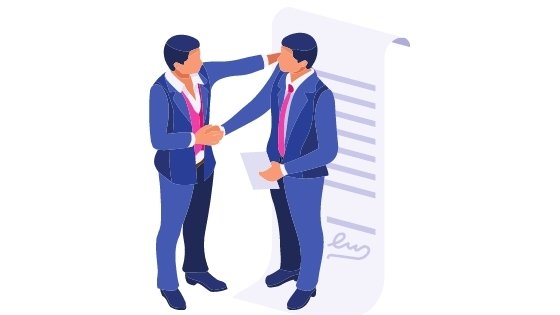
You can’t deny it.
The authoritative people have magical powers to influence other people to a greater extent.
They don’t always rely on the tricks that we talked about above.
So if you have authority over something, people will trust you.
And that’s why it’s the hardest to deal with.
The worst part?
Most people fake authority to influence.
For example, simple things like wearing a uniform can exude authority.
Another example: If a person owns a Mercedez Benz, he gets much more respect than a guy who owns a regular car.
So how do you deal with it?
It’s not that hard.
The author says that whenever you come face-to-face with an authoritative figure, you must heighten your awareness.
First, don’t consider what the authoritative person says as true by default.
Question the credentials of the other person.
The other person may be faking it.
But in usual cases, people don’t fake 100% percent. It’s a combination of both real and unreal.
For example, the authoritative person may be an expert on a topic. But he may also lie about certain things.
So don’t get spellbound while listening to an authoritative person.
Keep your awareness heightened.
And use your common sense.
Assuming that the authoritative person is always right could get you into trouble.
Bonus Lesson (Not From The Book —But Related)
This lesson would be best for the customers who don’t want to get tricked or persuaded for commercial purposes.
Anyway, the salespeople also become customers at some point.
So I guess it’d work for both.
Know your psychological triggers.
From my experience, I can tell you that almost every persuasive trick has one goal:
To trigger your emotion.
So if you realize all the ways you can be triggered mentally, you’ll not only be able to persuade others, but you’ll also be able to guard yourself against being swayed.
The Key Takeaways From “Influence By Robert Cialdini”
- Humans love to take shortcuts.
- People don’t believe you unless you give a genuine reason.
- Humans love to return favors.
- If something is rare, it seems valuable.
- Our minds reward consistent behavior.
- We perceive things differently when put in a different order.
- Authority isn’t always right and can be faked to influence people.
What Else Can You Learn On Blinkist?
- Why do we comply with the people we like?
- How can you make people like you?
- How can people similar to you influence your choices?
- You’ll also learn why the harder you have to work to get something, the more you value it.
You can get access to more than 2000+ book summaries on Blinkist. These days Blinkist is rapidly upgrading itself. Don’t know what Blinkist is? No worries. Read the full review.
Start Blinkist 7-Day Free Trial
Influence Book Review
[amazon box=”006124189X”]
This book discusses some primary (yet evergreen) concepts about persuasion.
The author has researched a lot and shared experiments throughout this book to guarantee the accuracy of the statements.
Some people may find those experiments boring and will probably jump to conclusions directly.
For example, the section where the author talked about the Milgram experiment was not so much fun.
You don’t need an entire experiment just to understand the power of authority.
We all have had teachers who forced us to do homework, right?
Which proves the power of authority.
Anyway, that’s just my opinion.
The language of this book was pretty simple. Not a problem for non-native English speakers.
People interested in doing business would like this book as it can help one influence more people …and make them buy more stuff.
This book won’t appeal to general readers.
But I fear one can use these tools of influence (like Scarcity, Authority, etc.) to manipulate people, and if used by the wrong person, they could cause trouble.
So make sure you read this book at least once and learn all the above strategies.
Considering everything, I’d give this book a rating of 7.2/10.
You May Also Like
Other summaries which are similar to this one:
It’s Your Turn Now!
I hope you enjoyed reading the Influence Summary and have become 1% better.
Now you tell me:
What do you think about the above lessons?
If you have already read this book, feel free to write your review in the comments below.
And…
Don’t forget to share with your friends and family members.
(No obligation. Just a humble request.)
